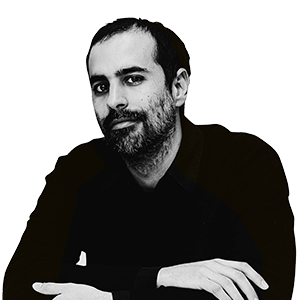The shacks of Cañada Real, setting for the best 'western' of the year
Guillermo Galeo dazzles with 'City Without Sleep', a fiction film shot in the largest informal settlement in Europe


BarcelonaIn 2025, two films shot in urban peripheries, in communities existing on the economic, moral, and even aesthetic margins of modern society, coincided. On the one hand, there was José Luis Guerin's documentary—which won an award at the San Sebastián Film Festival— Stories from the Good Valley, set in the Vallbona neighborhood and, on the other hand, fiction City without sleep, which Guillermo Galoe from Madrid has filmed in Cañada Real, the largest informal settlement in Europewhere hundreds of families live just 15 kilometers from Madrid in shacks or houses without basic services – this has been going on for five years Some areas do not have electricity supply.
Interestingly, both Galoe's fiction and Guerin's documentary are steeped in the border poetics of western twilight through the arrival of progress to a world uncivilized and daily life based on personal codes outside of society. "I have a very Fordian, John Ford-esque vision of Cañada Real," Galoe explains. "There are characters who are like John Wayne from..." The man who shot Liberty Valance"Halfway between good and evil, they have their own morality, their own laws, their own myths. Characters who sustain the world around them, a world that trembles when a new order arrives that challenges their way of life."
In City without sleepThe film, which arrives in theaters this Friday, tells the story of Toni, a 15-year-old Roma boy who hasn't quite lost his childhood innocence, but whose eyes already show a determination and rebelliousness that contrasts sharply with his love for his greyhound and the admiration he has for his grandfather, even among the most hardworking people. But Toni's world is thrown into turmoil when his parents accept an offer from social services to move to a subsidized apartment in Madrid; there's a subway, electricity, supermarkets, heating, hairdressers... "But is there also a field for greyhound racing?" asks Toni, torn between the world of his childhood, where he defends his grandfather, and the future his parents yearn for.
Local Fiction
All the actors who appear in City without sleep They are residents of Cañada Real who play themselves. Galoe recruited them through a "wild casting call," going door to door. "I didn't want outsiders," he asserts. "All the ingredients had to be local." To make things easier for them, Galoe built all the characters "from the person," through a "pact of absolute trust" that allowed him to "know each particularity, each trait, perfectly, which is precisely what gives a person their beauty." However, the director emphasizes that the film is "a complete fiction" born from the love he felt when he discovered Cañada Real and its people. "I felt the need to rework that world in fiction, and I found the key to doing so in the eyes of the children who live there, who would explain it like someone telling a story."
Yeah City without sleep It is a story, then, it is a coming-of-age story, one coming of age with its rites of passage and disturbing discoveries. In this sense, a key moment in the story is when Toni crosses the threshold of Paqui's courtyard, the woman who controls the drug trade in the area, territory enclosed by the camera—now Toni—which suddenly reveals the most sordid side of Cañada Real. The ravages of drugs on the addicts who live there are the great stigma, the open wound. "In Cañada Real there are many ordinary workers: electricians, bricklayers, scrap metal dealers... And they don't like living next to a drug market, nor do they like it being shown," explains Galoe. "But those who do work in this world, even the addicts, who are the lowest stratum of society, were eager to show themselves as they are. Paqui wanted to be seen so that everyone would know what she's like and, as she says, to get out of that hell." In fact, the director had to stop an addict who showed up on set with a bloody arm and a syringe dangling from it: "He'd say to me, 'I want you to show me like this,' but there's no need to resort to morbid imagery. In fact, I'm more interested in seeing all of this through Toni's face, in what this child, this child who's indistinct, feels."
How did Galoe, a stranger to that world, earn the "absolute trust" of the neighbors and the community? He says simply with "a lot of listening, a lot of observation, a lot of love and a lot of compassion, without promising things I didn't think I could deliver, without condescension, and with a lot of hard work." In fact, the director began working in the area in 2019, conducting film workshops. "I learned how they represented themselves, and they began to understand what cinema was," he explains.
A few months ago, after its premiere in a parallel section at Cannes, they screened the film in Cañada Real using an inflatable screen. "When they saw themselves, they heard that they, too, have a place in the images," the director recalls. "That they, too, can make films, and that they are good actors. And that they have made a film in which they feel worthy and represented. It is their film, and their images. And that they, too, have the right to win."
